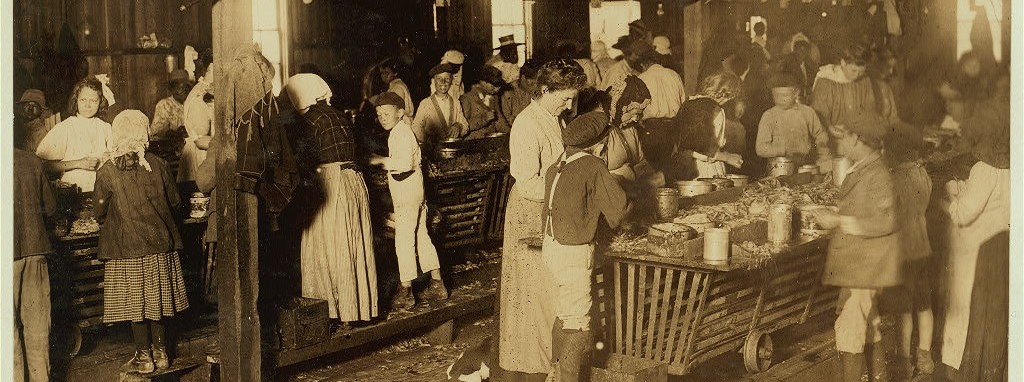
Recent Immigration History: Mississippi’s Seafood Industry 1880s to Present
The communities on the Mississippi Gulf Coast experienced an explosion of immigrants during the late 19th century, drawn by the area’s booming seafood industry. With the growth of the shrimping and canning industry, Mississippi’s local canneries needed hundreds of employees to peel shrimp and shuck oysters. Most of the immigrants that moved to Mississippi’s Gulf were Polish or Yugoslav, but some were Czech, Austrian, and German. During this time, the population of Biloxi doubled as a result of this massive immigration.
In the 20th century, Biloxi self described as the “Seafood Capital of the World.” In general, the male workers did the fishing, while women and children did most of the work at these factories. Most of the canneries were classified as “horticultural pursuits” and thus exempt from child labor laws. This practice largely ended in the 1910s following the photographic expose by reformer Lewis Hine and the National Child Labor Committee. Hine’s iconic photographs of seafood canneries are an invaluable depiction of what working conditions were truly like for seafood workers in the late 19th and early 20th century.
In the 1970s, the Gulf Coast seafood industry was suffering as the health of the Mississippi Sound deteriorated. This, coupled with the rise in fuel costs and inflation, made it too expensive for the ships to even leave the dock. However, unexpected newcomers partially revived the stagnating seafood industry in 1977. The fall of South Vietnam in 1975 resulted in Vietnamese refugees settling along the Gulf Coast. With successful conservation efforts improving the health of the Mississippi sound, by the 1990s, the industry had recovered with a majority of Biloxi’s seafood industry workers of being Vietnamese descent.


